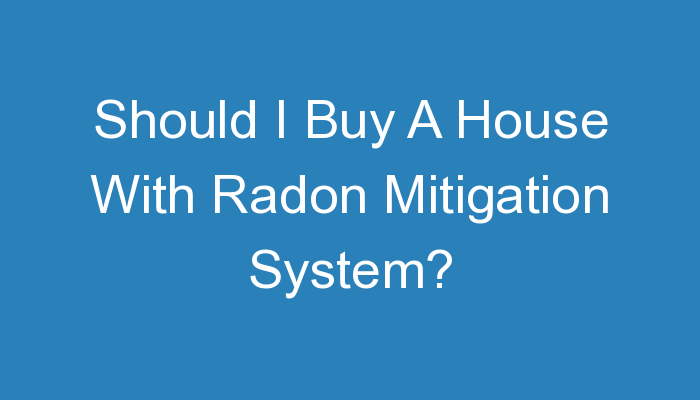Radon is a naturally occurring, radioactive gas that can be found in the air. It’s odorless, colorless, and can seep into homes through soil or concrete. Long-term exposure to high levels of radon can lead to health issues like lung cancer and respiratory illness. If you’re considering buying a house with a radon mitigation system already installed, there are a few things you should consider.
In this blog post, we will discuss the pros and cons of such a purchase, covering topics such as the cost of installing a mitigation system versus purchasing an existing one, maintenance requirements for an existing system, and more. Read on to find out if it’s worth it for you to buy a house with an existing radon mitigation system.
What is Radon?
Radon is a naturally occurring gas that can be found in the air, soil, and water. It is produced by the decay of uranium and radium, which are found in rocks and minerals. Radon can enter homes through cracks in the foundation or other openings. Once inside, it can build up to dangerous levels.
The Risks of Radon Exposure
Radon is a radioactive gas that can be found in both indoor and outdoor environments. It is produced naturally as the uranium in rocks and soil breaks down. Radon gas can seep into homes through cracks in the foundation or other openings, and become trapped inside. When inhaled, radon particles can damage the lungs and increase the risk of lung cancer.
Radon exposure is the leading cause of lung cancer among nonsmokers in the United States, according to the Environmental Protection Agency (EPA). The EPA estimates that radon gas causes more than 20,000 lung cancer deaths each year.
There are no immediate symptoms of radon exposure, so it is important to have your home tested for this invisible gas. If your home has high levels of radon, there are ways to mitigate the problem. Radon mitigation systems work by reducing or eliminating the source of radon gas entering your home. These systems typically involve installing a ventilation system that draws radon gas out of your home and releases it into the outdoors.
If you are considering buying a home with a radon mitigation system already in place, it is important to have the system inspected by a certified professional to ensure that it is operating correctly. Whileradon mitigation systems can be effective at reducing exposure to this harmful gas, they require regular maintenance and upkeep to remain effective.
Pros and Cons of Having a Radon Mitigation System
Radon is a colorless, odorless, and radioactive gas that can be found in homes all across the United States. While there are many dangers associated with radon exposure, having a radon mitigation system in place can help to protect you and your family from this potentially harmful gas. There are both pros and cons to having a radon mitigation system installed in your home, so it’s important to weigh all of your options before making a decision.
One of the biggest pros of having a radon mitigation system is that it can help to reduce your risk of developing lung cancer. Radon exposure is the second leading cause of lung cancer in the United States, so if you’re at all concerned about your health, this is definitely something to take into consideration. Additionally, radon mitigation systems are relatively low-maintenance, so once they’re installed, you won’t have to worry about them too much.
There are also some cons associated with radon mitigation systems. One of the biggest is the initial cost – these systems can be fairly expensive to install, depending on the size of your home. Additionally, while they require little maintenance overall, they do need to be checked periodically to make sure they’re working properly. If you’re not comfortable doing this yourself, you may need to hire someone to do it for you which can add even more to the cost.
How to Choose a Radon Mitigation System
When it comes to choosing a radon mitigation system, there are a few things you need to keep in mind. First, you need to know what type of system you need. There are two main types of radon mitigation systems: active and passive. Active systems use fans to draw air out of the home, while passive systems rely on natural ventilation to do the job.
Next, you need to consider the size of the system you need. The size of your system will depend on the square footage of your home and the level of radon in your area. A qualified contractor can help you determine the size of system you need.
Finally, you need to decide where you want the system installed. Some people opt to have their system installed in their basement, while others choose to have it installed in their attic or crawl space. Ultimately, it doesn’t matter where you install your system as long as it’s installed properly and maintained regularly.
Conclusion
In conclusion, a home with a radon mitigation system can be a great opportunity for those looking to purchase their first house. It is important to do your research when it comes to these systems, so that you know exactly what you are getting and how effective the system will be in protecting you from dangerous levels of radon gas. With all the information we have provided here, hopefully, you now feel more confident about whether or not buying such a house is the right decision for your particular situation.

